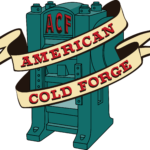In the world of modern manufacturing, precision, efficiency, and innovation reign supreme. Among the various techniques that have transformed the landscape of production, cold forming stands out as a pillar of excellence. This intricate process has revolutionized the way components are produced, offering unparalleled advantages across industries. In this comprehensive guide, we delve into the depths of cold forming, unraveling its intricacies and highlighting its contributions to manufacturing excellence.
Unveiling Cold Forming: A Brief Overview
Cold forming, also known as cold forging or cold heading, is a manufacturing process that involves shaping metal materials into desired forms at room temperature or slightly elevated temperatures. Unlike traditional methods that involve heat and molten metal, cold forming relies on extreme pressure and force to reshape metals without altering their molecular structure. This unique approach offers a myriad of benefits that extend beyond conventional manufacturing techniques.
The Science Behind Cold Forming
At the heart of cold forming lies a delicate dance of physics and metallurgy. Cold forming takes advantage of the metal’s property to undergo plastic deformation under high pressure. The process typically involves the use of specialized machinery such as presses and dies to exert immense force on the metal. This force induces plastic flow, causing the metal to take the shape of the die while retaining its strength and durability.
Advantages that Redefine Manufacturing
Cold forming isn’t just a process; it’s a game-changer. Manufacturers across industries are turning to cold forming for several compelling reasons:
- – Enhanced Material Properties: Unlike hot forming methods that can lead to grain growth and reduced material strength, cold forming retains the original material properties. This results in components with improved mechanical characteristics.
- – Precise Dimensional Control: Cold forming allows for intricate designs and tight tolerances. The absence of heat-related expansion and contraction ensures that the final product maintains precise dimensions.
- – Material Savings: The efficiency of cold forming minimizes material wastage. This cost-effective aspect makes it an environmentally friendly choice while reducing production expenses.
- – Increased Production Rates: Cold forming operates at faster cycle times compared to traditional methods. This accelerated production rate translates to higher output volumes and quicker time-to-market.
- – Versatility Across Industries: From automotive to aerospace, electronics to construction, cold forming finds its applications in diverse sectors. Its adaptability to different materials and complex geometries makes it an invaluable tool for manufacturers.
Cold Forming in Action: Real-World Applications
The reach of cold forming spans far and wide. Consider the automotive industry, where it’s used to create engine components, fasteners, and structural parts. In aerospace, cold formed parts contribute to lightweight designs crucial for fuel efficiency. Even everyday items like screws, bolts, and rivets owe their precision and strength to cold forming.
Stepping into the Future of Manufacturing
As the manufacturing landscape evolves, cold forming continues to pave the way for innovation. The ability to create complex shapes with unmatched precision, all while conserving resources, positions cold forming as a cornerstone of modern manufacturing excellence.
In conclusion, cold forming isn’t just a process; it’s a testament to the ingenuity of human engineering. Its scientific principles and practical advantages have reshaped industries and pushed the boundaries of what’s possible. As we move forward, embracing cold forming means embracing a future where efficiency, precision, and sustainability coalesce to redefine the very essence of manufacturing.
